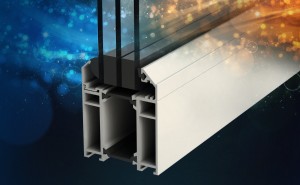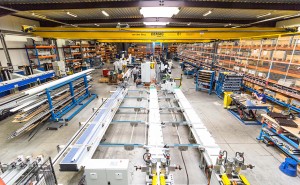Windows are often considered the weak point in a building’s insulation, but that doesn’t have to be the case. The right glazing combined with the right profiles will help you take a major step forward.

Double glazing: the standard
Glass has become an intrinsic part of our society. That’s completely logical, once you realise that glass has been around as long as the earth itself. Traces of glass have even been discovered on the moon. Even so, it took until 3500 BC before people figured out how to use it deliberately. In fact, glass wasn’t introduced in building construction until the Romans. Around 100 AD, the first windows made using cast glass sheets were used in the luxurious villas of Pompeii. German glass-makers took an important step towards modern glazing in the 11th century. They developed a technique for manufacturing flat glass sheets. Even then, glass windows were a privilege reserved for the rich.
Belgian innovation
This slowly changed during the Industrial Revolution, when glass production evolved from manual labour to a fully fledged industry. Two Belgians were responsible for a major innovation at the start of the 20th century. Up until that time, molten glass had been cast onto large, flat tables and then flat-rolled and polished, but Emile Gobbe and Emile Fourcault were the first to successfully produce a continuous flow of flat glass. The technique they developed is referred to as a ‘vertical draw’ process. The system was introduced all over the world, and glass evolved into a mass-produced commodity.
It was quickly discovered that a single pane of glass was not the perfect solution for keeping the cold out. Double glazing saw a remarkable increase in popularity after the Second World War.
Simple principle
The principle is simple: double glazing consists of two panes of glass. The space between them – the cavity – is filled with dry air or a gas (usually Argon or Krypton). The thickness of the glass panes, the width of the cavity, and the gas selected to fill the cavity all affect the insulation value. Double glazing has now become the standard. This makes sense if we look at the advantages compared to single glazing:
- Significantly improved thermal insulation: heat loss is 50% lower than with single glazing
- Significantly improved acoustic insulation
- Less condensation
- Lower energy costs
- Eco-friendly: lower energy consumption means lower CO2 emissions
- Increased safety: double glazing is simply stronger than single glazing
Technological progress did not stop at double glazing, however. You can now buy A++ rated glass, where the glass is equipped with a thin, heat-reflective metal coating on the inside. This high-efficiency glass insulates even better than ‘normal’ double glazing.
The right profiles
Triple glazing has become increasingly popular in recent years. But no matter how well the panes are insulated, you’ll only achieve the best insulation results if the glass is supported by the right profiles. Aluminium profiles are a good choice. Once thermal barriers are inserted, these profiles achieve insulation values that are equivalent to traditional wooden frames or PVC profiles. Especially when they are produced using the revolutionary 3-in-1 thermal break assembly solution delivered by Aluro: the Aluroller EVO.
- Peter De Roovere



Leave a comment